October 2011
October 4, 2011
Keith Stuart interviewed me for his “Indie Dozen” series in The Guardian.
In this week’s catch-up with the Indie Dozen developers, I’ve spoken to Vancouver-based designer Jack Nilssen…
Alongside his game projects under the studio name Dark Acre, Nilssen has also been writing fiction, self-publishing a full-length novel, Ambia, which works as a prequel to the coder’s ongoing ‘opus’ game project. As he explains, “It follows the adventure of an ex-interstellar trader holidaying in backwater Solarus, only to find that his past is harder to escape than he bargained for.”
Can you tell us what you’ve been working on over the summer?
Jack Nilssen: Work has been continuing apace on The Child, the isometric adventure game that got its start in the Ludum Dare 48 #20 game jam. I’ve been spending a lot of time in 3D Studio Max and Photoshop improving the quality of the artwork, and learning the complex ins and outs of 3D animation systems. I would love to have access to a proper motion capture studio, and apparently one can be had on the cheap using a plug-in for Max and a Kinect, so I’ve looking into that for future projects.
I’ve also just recently participated in the Ludum Dare 48 #21, and came away from that with an interesting concept that I may develop further once The Child has been released.
What development packages are you working with at the moment?
JN: I’ve been working with Unity since before I went indie, and continue to enjoy its ease of use and growing popularity. A while ago they added support for Allegorithmic’s Substance system, a procedural texture generation system.
Seriously, if you want to do rapid development and know any .JS, C#, Boo, or Python you’re doing yourself a disservice by not investigating the Unity toolset. Also, I’ve found that even though I have the Pro license I haven’t strictly needed it at all in this first year of my indie life, so don’t let that get you down. Make what you can with the free license, you can still publish to desktop and web, which means you can get your game into challenges like the Ludum Dare 48 and up on sites like Kongregate and Flashgamelicense so there’s no excuse other than the inability to execute on a design.
What are some of the key game design issues you’ve faced over the summer?
JN: The Child is my first game with an official “beauty pass”, meaning I’m taking the time to really polish up the visuals. This has required me to spend much less time coding and designing gameplay, and far more pushing pixels and vertices around. The decision to leave off one for the other was hard, as I think it’s critical to be constantly improving the coding side of the business, but at the same time I need that thorough understanding of 3D to really make my games sale-able.
Within The Child’s gameplay I decided to allow “backtracking”. In other words, the player can now move to and fro between rooms, whereas before it was a very linear experience. This new system has allowed me to design a “realistic” layout for the game environment and create more complex puzzle elements. It’s also forced me to create dynamic environments that change, so that when the player comes back through them they’re not just slogging over old terrain.
Have you taught yourself anything new in terms of programming?
JN: With the polishing and improvement of the visual side of things I’ve been spending a lot of time working with particle systems and modifying textures and materials through code. I can now do up fancy flickering sparks and clouds and so forth using Unity’s built-in particle system. This was something I’ve wanted to learn for a long time, and glad I’ve finally had the opportunity to do so.
Jack, whose work is inspiring you at the moment?
I’m really looking forward to HAWKEN – that’s a small-team indie studio doing amazingly beautiful things with Unreal. It’s the level of polish and quality that I aspire to, but I realise that I’m only going to get there once I start collaborating with people better than me, and that’s still a ways off…
October 5, 2011
Dark Acre Year Zero Report
365 DAYS SOLO INDIE: A POST-MORTEM
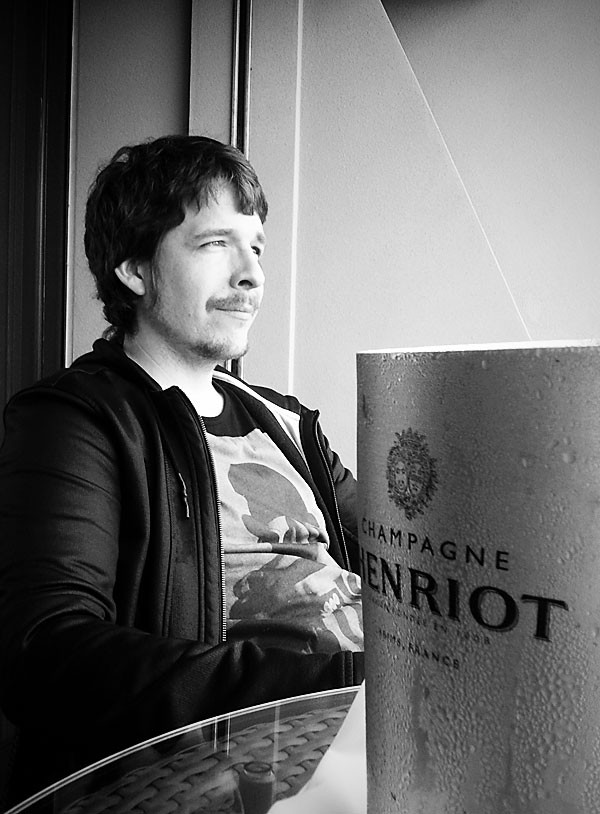
First, a brief timeline of events that led to Zero Yero:
- July 2002: Epiphany on the beach during a working holiday in Beppu, Kyushu. Decision to “somehow get involved in the game industry” made.
- August 2002 – January 2003: In-depth analysis of game industry. Interviewed dozens of professionals and started curating and consuming RSS feeds solely dedicated to gaming and game creation. To this day it’s the only news I consume. (No longer true. The WSJ is now my daily driver. –Ed.)
- February 2003 – February 2004: Completed MBA bridge courses part-time to gain a better understanding of the art of business, after identifying a disconnect in the industry between executive and creative arms of game companies.
- March 2004 – October 2008: Promoted to “business English instructor” at Berlitz Japan, Inc. Spent nearly every paid minute of work having conversations with some of the top entrepreneurs, established executives, politicians, and myriad others in Tokyo from various fields.
- May 2004: Decision to enter Vancouver Film School (VFS) made. Cost of tuition and living calculated. All extraneous expenses stopped and nearly 90% of income banked from this point forward.
- January 2005: Application to VFS submitted. Accepted shortly thereafter to enter their Foundation Art and Design program from October of that year.
- July 2005: Enrollment in VFS deferred to October 2006 save more working capital.
- 2006: Shifts in game industry mentality and emergence of independent game development “superstars” put heavy pressure on post-graduate path. Decision made to go independent upon graduation from VFS.
- August 2006: Enrollment in VFS deferred to October 2007 save more working capital.
- June 2007: Enrollment in VFS deferred to October 2008 save more working capital.
- June 2008: 3-months notice given at Berlitz Japan, Inc, ending a near 10-year extremely lucrative career and leaving what remains as the most comfortable working environment on the planet. No tears shed. (Gosh, but I knew so little. Working from home is the most comfortable working environment possible, but in 2008 it was unheard-of. –Ed.)
- October 2008 – October 2009: Attended VFS’s Foundation Art and Design program. Graduated with honors.
- October 2009 – September 2010: Attended VFS’s Game Design program. Left early after meeting graduation requirements to found Dark Acre.
- September 24, 2010: Dark Acre Game Development founded in Vancouver, Canada.
The chronicles of what followed can be found on the pages and posts of this website.
FACTS AND FIGURES
Financials
All values in Canadian dollars, year total/monthly average
- Administrative Costs (incorporation and licensing): $2,074.06/$172.84
- Billings (how much I felt my time was worth): $40,380.00/$3,365.00
- Delivery (postage): $9.81/$0.82
- Donations (made to charities/NPOs): $49.23/$4.10
- Entertainment (business meals and events): $124.08/$10.34
- Hardware (dev machine upgrades/peripherals): $876.33/$73.03
- Marketing (press releases/advertisement): $182.50/$15.21
- Memberships (IGDA, DigiBC): $48.00/$4.00
- Phone (business land-line): $360.00/$30.00
- Rent (percentage for home office): $1,200.00/$100.00
- Research (“competitors” games): $893.04/$74.42
- Software (development applications): $2,153.01/$179.42
- Utilities (electric): $240.00/$20.00
- Food: $1,620.00/$135.00
- Rent (actual): $10,800/$900.00
- Total Cost Minus Billings: $20,630.00
I hope that’s of some use. I live extremely frugally, in a low-rent apartment, but I’m able to do what I love and (discounting the “actual” food and rent) the first year of independent development cost me less than $10,000. This is exactly in line with the projections I made in 2006.
Had I earned what I felt my time was worth, I would have seen a profit of roughly $20,000. That would have been enough to take on a partner. I feel it’s an important exercise for any independent to value their time and make these kinds of calculations. Far from discouraging me, it motivates me and sets reasonable and attainable goals that help drive production.
Results
Primary Game Projects:
- Project Zero Zero: Announced. Two backstory lore-books written and published, one audio diary recorded.
- Project Zero One: Deployed after 55 days of development as free-to-play.
- Project Zero Two: Shelved after 39 days of development.
- Project Zero Three: Deployed after 71 days of development as free-to-play, 367 plays and 2.70 rating on Kongregate.
- Project Zero Four: Shelved after 81 days of development.
- Project Zero Five: Announced. Delayed twice. Development ongoing.
- Project Zero Six: Announced. Development ongoing.
Ludum Dare 48 Entries:
- LD48 #19, “Discovery”: Completed. #89 Overall.
- LD48 #20, “IDtGA,TT!”: Completed. #13 Overall, #9 Graphics, #6 Audio.
- LD48 #21, “Escape”: Completed. #123 Overall, #2 Theme.
Writing:
- National Novel Writer’s Month 2010: Completed, unedited and unpublished.
- Tale of the Madeus, Solarus I (novella): Published for $0.99, 12 sold via Amazon.com/.uk and 2 via iTunes.
- Ambia, Solarus II (novel): Published for $0.99, 4 sold via Amazon.com/.uk and 3 via iTunes.
- Parlow’s Choice (short story): Published for free, 26 downloaded via iTunes.
Total Combined Earnings from Games & Writing: $10.57 Amount Paid: $0.00
It was a lean year, but that was part of the plan, completely acceptable, and par for the course. It is entirely reasonable to expect no profit for the first five years of any venture and a hit-driven business is, more often than not, an all-or-none kind of venture.
We’ll see what Year One brings.
WHAT WENT RIGHT
1. Focus, Drive, and Determination
It’s very hard to reach the launch of a dream that had been more than 8 years in the making and not fly out of the gates at full steam and filled with energy.
The first few months were explosive in terms of learning and development. The initial schedule was very tight and demanding, and I buckled down and relished every second.
I was very eager to prove myself, and that momentum helped push me in the right direction and keep me motivated.
2. Early Release
While a very crude and amateur attempt at game-making, Project Zero One: Above and Below represented perhaps the most critical action I could have taken, which was drive to release early. That entire process of executing on a concept and then dealing with the public reaction to it was so important for understanding my weaknesses and how much more work I would have to do, that I wouldn’t trade that for anything.
If there’s once piece of learning/advice from all of this, it’s get your first game out the door ASAP, and worry about making your 40th game the best it can be.
3. Single Engine Focus
I love Unity 3D. Over the course of Year Zero I was sorely tempted to stray into other territory, and for a time I did. I played around with UDK, Corona SDK, and even the recently-free CryEngine 3 Sandbox.
I even toyed with Objective-C/XCode. All of these proved to be distracting from the main goal, but dabbling in them helped me to appreciate my strengths and the advantages of the main engine that I had chosen for my work.
4. Ludum Dare
There’s be a lot written about the importance of game jams, and I’m not going to dispute any of it. They are of absolute and critical importance, as they give developers a chance to actually finish a project for a change. Stan Lee said it best when he equated game-making to “miracles”.
There are so many jams out there now, and you don’t even really need an excuse to run one yourself, but entering a high profile one like the Global Game Jam is a great opportunity to get out and interact with other developers and simply have a good time.
I had to choose this particular battle carefully. Jams take time, distract from primary projects, and are extremely draining. As a solo developer I felt that the Ludum Dare 48 best fit my situation, what with it being a solo competition and one that happens only every few months.
I owe a huge debt of gratitude to the organizers and participants of the LD48 for all their hard work and support. Without them, the current primary project The Child would never have been.
Donations to support the Ludum Dare site and operations have been recently re-opened, so feel free to give until it hurts.
5. Writing More Than Just Games
If you’ve been following along, you’ll know that I’m also hedging my independent career risks by engaging in science-fiction/space opera writing. Having that second outlet to go to worked wonders in keeping me energized for the game projects, particularly once I started to get tangible and published results.
Self-publishing books follows a very similar business model to games, in that the content is delivered digitally and much the same promotional tactics are involved. Plus, if done right, they can compliment each other. It’s definitely proven lucrative for authors and their game tie-ins, so why not go from the ground up and write the fiction for my own games? Certainly, it’s a lot of work, but that’s what I’m here for.
WHAT WENT WRONG
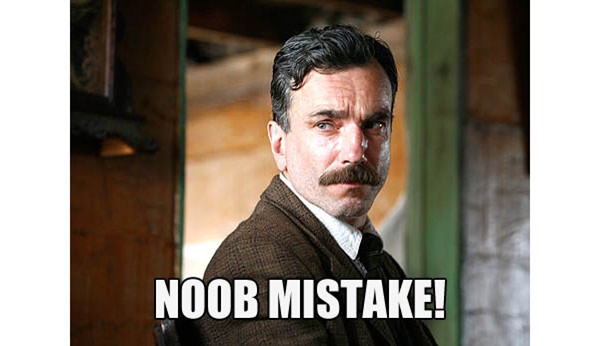
1. Too Much Plainview
My initial attitude out the gate was pretty brutal. I felt a bit like Conan, alone on a battlefield swarming with enemies, and all I had was my wits and a half-sharpened battleaxe with which to hew necks and split sinews. I was taking on the world, and I was doing it my way. Liberating, but I walked too far to the right of the line and fell into an abyss of independence that would take almost the entire year to crawl out of.
There’s a value to the fine quality of hard-nosed determination, and being a person who gets things done. It goes too far when that attitude comes at the expensive of potential relationships with others in the field. I was so focused on doing my own thing that I neglected many who were within reach for even just friendly conversation.
“Who has time for friends? I’ve got games to make!” As Breakdance McFunkypants would advise his good pal Lee Taxxor, NOOB MISTAKE!
Striking the right social balance is critical but also extremely difficult. Compound the generally anti-social nature of the business of games with the often stoic and taciturn nature of being an independent and you’ve got a recipe for misanthropic self-destruction.
The solution isn’t spending more time on Twitter, Facebook, or in bars, either. I believe the trick is in engaging people where they live, asking the right questions of the audience, and building up relationships over time through conversation.
Dark Acre’s Year Zero was a one-sided spew of content, and I’ve resolved to change that going into Year One. The only real goal now is to make more real friends. (Some sixteen years later, while this is solid advice, it remains nebulous and unattainable in a digital, virtual-only space. –Ed.)
2. Not Enough Down-Time
6-day work weeks, 17-hour work days, the bulk of that time spent indoors absorbing vitriol from social networks and news sources, and more often than not head-to-desking in search of solutions to new and exciting challenges was a recipe for psychological damage.
I’d read several articles about game development and depression prior to starting out, but I’d thought I was different. I thought I was somehow tougher, or stronger-willed.
I was wrong.
There’s an old joke that the entrepreneur is the person who works 16 hours a day to avoid working 8. I think that in many cases driven people can’t help but push themselves to their breaking points and beyond in pursuit of their visions. I know that was my mentality coming into Year Zero. It took me tearing myself away from everything and running off to Tokyo for a couple of weeks to fully appreciate just how much I’d been over-working myself.
So, a second key point here: take time out. Even if you don’t feel like you can, financially, you have to for the sake of both physical and psychological well-being.
3. Too Much Soc-Netting
Social networking is important to independent developers and producers. Absolutely. But a line needs to be carefully drawn between how much time is spent developing those networks and how much is spent actually building stuff.
With the new and improved model of development on the Acre being “make something, make something more, make a few more things after that, and then talk about them”, there’s going to be a marked movement away from constant broadcasting on the soc-nets.
It might seem like an overwhelming temptation to develop as big a network as possible, but this is potentially counter-productive. I’m firmly of the belief that with social networks an “if you build it, and it kicks ass, they will come” attitude is best. That bolded caveat is of utmost importance, though. People like good things and, in this day and age of direct communication with creators, they’d like to get to know who made those good things.
So the logic is pretty straightforward: make good things, people will want to get to know you. Everything else is, unfortunately, blowing hot air.
4. Unity Professional License and Incorporation
This is a hindsight one, and it’s not a terrible loss but it does still rankle a bit.
I spent a fair amount of time and money establishing Dark Acre as a corporate entity, and now must spend more time and money maintaining it with fees and taxation. As I haven’t really seen any sales from the games, being incorporated hasn’t helped much. It may have been wiser to wait until I was more established as an individual, but it’s hard to tell. I could very well have written a hit novel right off the bat and having the corporate structure would have helped tremendously, but that didn’t happen.
Also, with the Unity Pro license, I have yet to use any of the features of it in any of the games I’ve made, and that includes The Child. I could have waited on that as well.
So am I advising you not to incorporate nor get the Pro software license? No, but I am saying they may not be as important or as necessary as you think. That’s just something you’ll have to SWOT out for yourself if you’re considering them.
ENTER YEAR ONE
It’s going to be business as usual around the Acre as I continue to pursue the goals set out in the original 5-year plan.
The only major change is that there’s likely to be less frequent updating of this blog. I’m shifting the development tracking to a more formalized internal journal structure that I can then edit and release later in post-mortem form on a project-by-project basis.
I’ll still be putting out in-progress videos and screenshots, most likely through the YouTube channel, Twitter, and Google Plus. So you’re welcome to follow any of those channels if you want to have your finger on the Dark Acre pulse.
I’m really searching for personal contacts with anyone who’s interested in sharing their experiences. Not just about game development, but about anything. To that end I really encourage you to get on Google Plus and start up a conversation. I’m just as keen to know what you’re doing, so please Circle me and let’s chat.
That’s all for now, and I used to close these with “see you in seven” but now you’ll have to be content with “see you when I see you”.
Thanks from the bottom of my heart for following these words and deeds, and here’s to another challenging and exciting year from myself, Jack Nilssen, and the Dark Acre.
Excelsior!
October 21, 2011
Jump-starting the Dark Tractor
DEALING WITH REJECTION
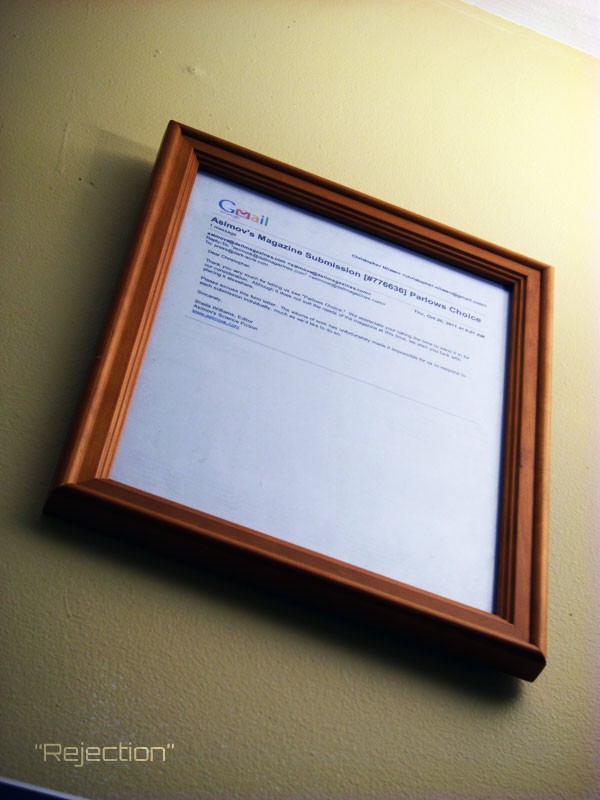
This was the best news I’d gotten all week!
A rejection is confirmation of receipt. Maybe they read it, maybe not, but somewhere in a magazine’s offices a submission containing a story I’d written had been opened by someone with the capacity to tell me that it didn’t suit their needs. I couldn’t be happier, really.
The letter now sits, framed and mounted on the wall above my development machines, as a source of inspiration. A totem of “do better”.
Now, this was my first-ever submission to a real magazine. Never before in my life had I thought to do such a thing. The receipt of the rejection letter closes the loop on an experience that perhaps not many next-generation authors will ever have to circle. In this day and age of self-publishing, we can reach as wide a readership as the quality and interest levels in our work achieves.
Still, it woulda been pretty cool to get printed up in a magazine that I grew up reading. Fortunately, on the very day that I received the rejection letter, a friend notified me that Apex Publications was putting together a collection, and that she felt Parlow’s Choice would be a good fit! So I’ll be tossing the story to the wolves once again in January. (Did I end up doing this? I don’t believe I did. –Ed.)
But you don’t have to wait to see the story appear in any print publication anywhere, not so long as you’ve got the patience to read it on your computer screen, or have one of those fancy-pants touchtronic devices. Best of all, the story’s free.
Please visit the Parlow’s Choice project page for more details.
SOWING SOME SEEDS FOR THE ACRE
Ever wanted to donate to help fund Dark Acre production?
Maybe wanted to show support by picking up one of the e-books, but weren’t interested in science fiction?
TELUS, a local telecom giant, is holding a “best pitch” contest from their business solutions page on Facebook. There are two prizes of packages containing $1,500 and an iPad and iPhone. The contest ends on October 31st, and you can vote once per day until it expires!
EDIT: 100% of the $1,500 will go to the purchase of an iOS license for Unity 3D, allowing me to immediately publish all past, present, and future Dark Acre games on iPhone and iPad. This is important!
Here’s how you can help me and Dark Acre jump-start some iOS mobile development:

As the diagram above shows, it’s pretty simple to help out:
- Go to the contest page and click “View & Vote”.
- Search the pitches for the bad-ass tractor and “Catch a Rising” title, and click that one.
- Click “I’m sold!”. Make a cool comment showing your support so maybe your Friends will help out too!
Repeat the above steps every 24 hours until October 31st for maximum enjoyment.
Voting will Post to your Facebook Wall. It’s extremely helpful to have at least one of them up for a little while, so that Friends of yours who may not yet be mine have a chance to check out what you’re supporting, and perhaps throw in their support as well.
It will start getting unsightly after a couple of days, though, as it posts each time you vote. And you are planning to vote daily, right?
Here’s how to get rid of those and any other unwanted Posts from your Walls, keeping them clean and tidy for all your Friends:
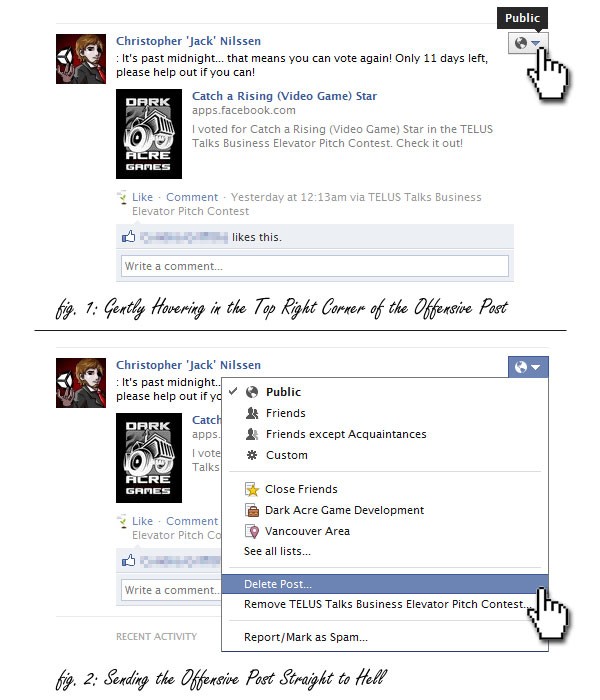
- Hover in the top right corner of the post and click.
- Select “Delete Post…”. Don’t worry, this will not remove your vote!
Finally, the TELUS page will occasionally make News on your main Feed. If you don’t want to see this News, here’s what you do:
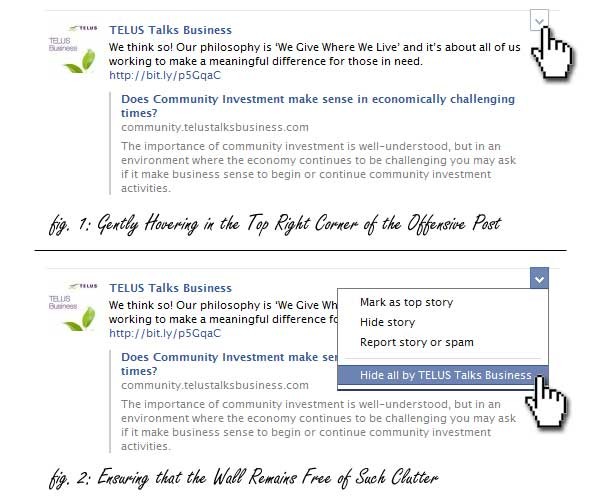
- Hover in the top right corner of the Post and click.
- Select “Hide all by…”.
The TELUS page will not spam your Friends, they will only see the Post(s) that say you supported Dark Acre.
It will be safe to “UnLike” the TELUS page after November 14th, as that’s when the winners will be announced.
I’d love to offer all kinds of incentives to go and vote for Dark Acre, but that’s against the rules. I would hope that if you’ve ever wanted to help me out with my indie game development adventures, and have a Facebook account, that this would be a quick and easy way to offer some support.
If you really are keen on offering some monetary support and wondering where the heck my “Donation” button is, feel free to buy as many copies of Tale of the Madeus and Ambia as your heart desires. At only 99¢ each you could probably pick up a few and gift them to your iPad- and Kindle-wielding friends.
You have my sincerest thanks and utmost appreciation for taking the time to read this post. Your time is precious, and I’m glad to have you as a supporter.
As usual and if you haven’t already, find me on Google Plus/Twitter/Facebook and now feel free to add me on Skype, under the name “darkacrejack“. Always looking for fresh conversation about gaming, game development, and whatever else you’re keen on!
Peace.
**P.S. You see those three little buttons under this post? Those let you Tweet this blog entry, share it to Facebook, or add it to your Google. All of those things would be so very helpful, particularly with this contest, so please Share if you can. Thanks again! (There were numerous functions available in this website over the years. Those were part of the Wordpress era. –Ed.)
October 23, 2011
Space Finger
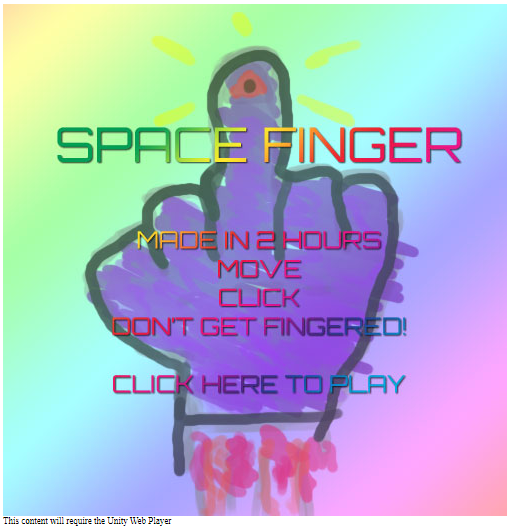
(The above launched the game right there in your web browser. The project did not survive the Dark Acre Purge of 2015. –Ed.)
INSTRUCTIONS
- Directional Keys to Move
- Mouse to Aim
- Mouse Click to Bork Fully-Formed Space Finger
STORY
Commander Head is lost in a Neural Vortex after being roofied by the evil Emperor Extremiti XVI! Destroy his army of Space Fingers before they can lay their slimy purple pointers on you!
PROJECT STATUS
- Pooped out cleanly in 2 hours.
- This was made in 2 hours for the Pirates Kart Komedown Afterparty.
2011.10.01 – 2011.10.31